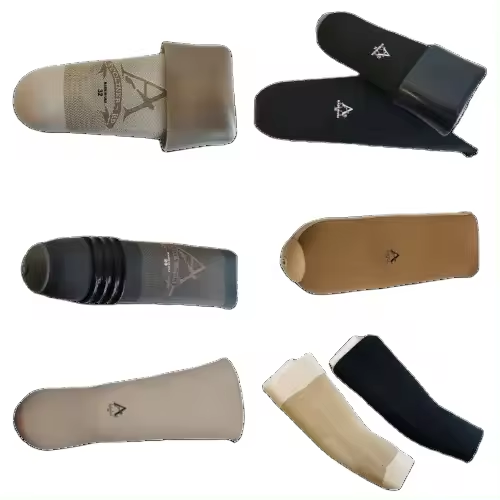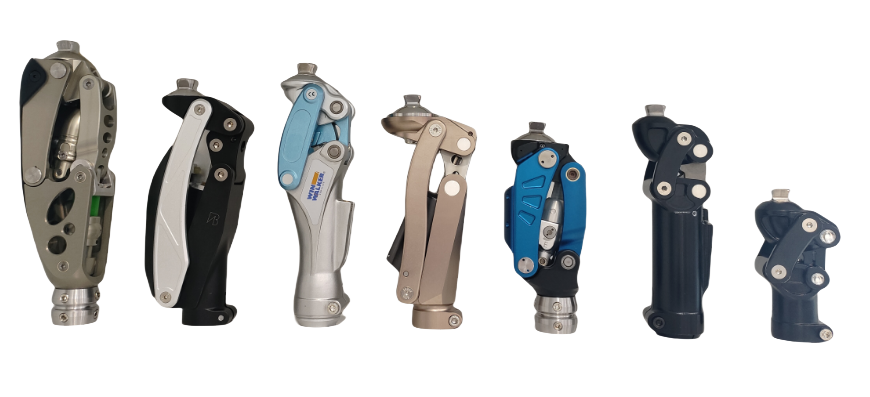Discover the Benefits of Prosthetic Leg Cotton Gel Stump Socks
Release Time:
Nov 28,2023
Learn about the advantages and features of prosthetic leg cotton gel stump socks, a crucial accessory in the field of medical materials for amputees.
Introduction:
Prosthetic leg cotton gel stump socks play a vital role in providing comfort and protection for individuals who use prosthetic legs. In the medical materials industry, these socks are considered an essential accessory for amputees. Let's delve into the key features and benefits of these innovative socks.
1. Enhanced Comfort:
Prosthetic leg cotton gel stump socks are designed to offer exceptional comfort to amputees. The cotton material provides a soft and breathable surface against the skin, reducing irritation and friction. The gel padding within the socks helps distribute pressure evenly, minimizing discomfort caused by prolonged use of prosthetic limbs.
2. Moisture Management:
Moisture can accumulate between the residual limb and the prosthetic socket, leading to skin problems and discomfort. These socks feature moisture-wicking properties that efficiently draw sweat away from the skin, keeping the residual limb dry and reducing the risk of skin irritations or infections.
3. Protection and Cushioning:
The gel padding in prosthetic leg cotton gel stump socks acts as a shock absorber, providing enhanced cushioning and protection for the residual limb. This feature helps reduce impact forces during walking or other physical activities, preventing potential injuries and discomfort.
4. Proper Fit and Suspension:
Achieving a secure and optimal fit of the prosthetic socket is crucial for amputees. Prosthetic leg cotton gel stump socks contribute to this by providing a snug fit and improving suspension. The socks help fill any gaps between the residual limb and the socket, ensuring a better connection and reducing the risk of slippage.
5. Prevents Skin Breakdown:
Continuous rubbing and pressure on the residual limb can lead to skin breakdown and ulcers. Prosthetic leg cotton gel stump socks act as a barrier, minimizing friction and pressure points. This helps protect the skin, reducing the chances of developing painful sores and promoting overall skin health.
In conclusion, prosthetic leg cotton gel stump socks are an essential accessory in the medical materials industry, specifically designed to enhance comfort, provide moisture management, offer protection and cushioning, ensure proper fit and suspension, and prevent skin breakdown. For amputees, these socks are a valuable addition to their prosthetic limb, promoting better overall well-being and improving their quality of life.
Keywords:
You Can Also Learn More About Industry Trends
Dec 14,2025
The Future of Medical Prosthetic Implants: Innovations and Insights
Medical prosthetic implants have revolutionized the field of healthcare, providing solutions that enhance the quality of life for individuals with disabilities or injuries. These implants can replace or support damaged body parts, allowing patients to regain functionality and mobility. As technology advances, the development of medical prosthetic implants is becoming increasingly sophisticated, in
Dec 07,2025
The Comprehensive Impact of Medical Prosthetic Implants in Modern Healthcare
The Comprehensive Impact of Medical Prosthetic Implants in Modern Healthcare Table of Contents 1. Introduction to Medical Prosthetic Implants 2. Types of Medical Prosthetic Implants 3. Benefits of Medical Prosthetic Implants 4. Technological Advancements in Prosthetic Implants 5. Challenges in the Adoption of Prosthetic Technology 6. Impact on Patient Quality of Life 7
Nov 30,2025
Understanding Medical Prosthetic Implants: Innovations and Benefits
Medical prosthetic implants have become a cornerstone of modern medicine, offering solutions for individuals who have lost limbs, suffered from joint problems, or require surgical replacements due to various medical conditions. The field has seen remarkable advancements over the years, leading to improved quality of life for countless patients. At the heart of medical prosthetic implants is the go
Nov 23,2025
Exploring Innovative Materials Used in Medical Prosthetic Implants: A Comprehensive Guide
Exploring Innovative Materials Used in Medical Prosthetic Implants Table of Contents 1. Introduction to Medical Prosthetic Implants 2. Importance of Material Selection in Prosthetics 3. Traditional Materials in Prosthetic Implants 4. Innovative Materials Transforming Prosthetic Design 4.1 Titanium: The Gold Standard 4.2 Ceramics: A Biocompatible Op

Building 58, Tianshan Community, Yuanshi County, Shijiazhuang City, Hebei Province
Phone/Whatsapp:
E-mail:
Main Business
Specializing In The Import And Export Trade Of Prosthetics And Orthotics Products
Find The Products You Need Quickly
Quick Navigation






